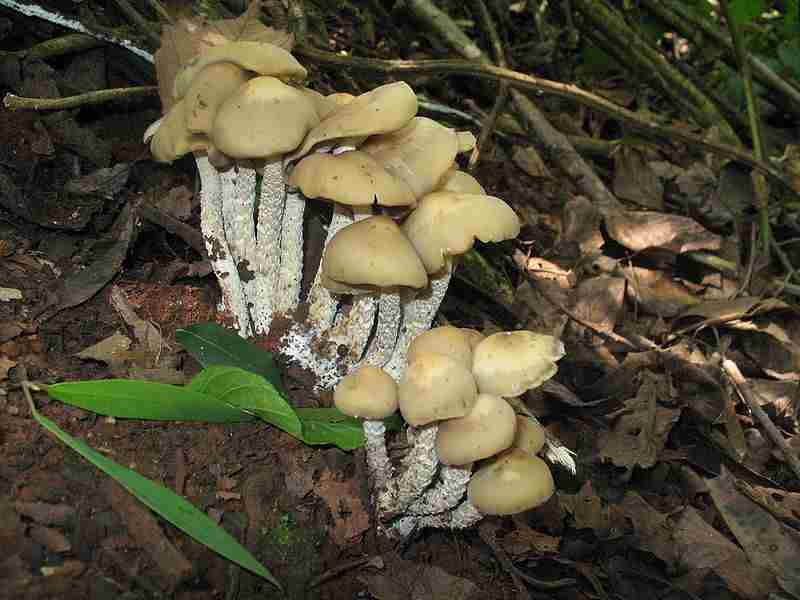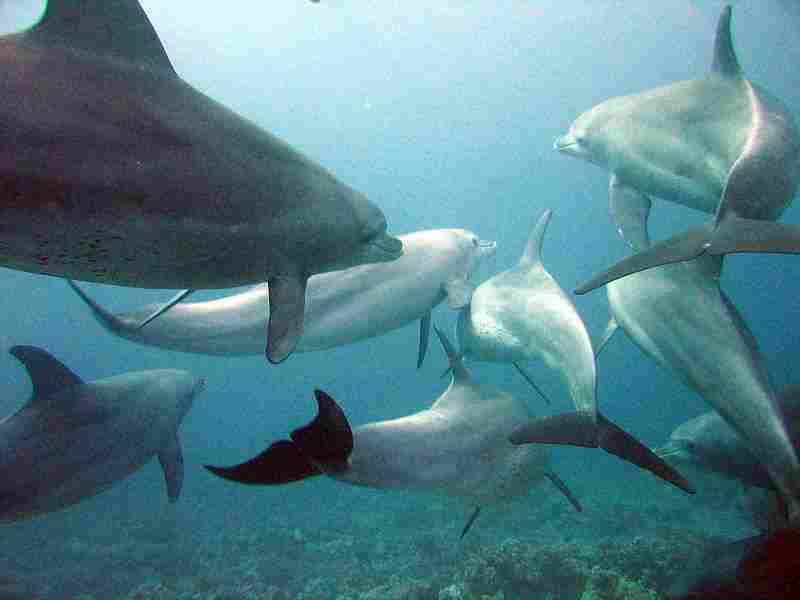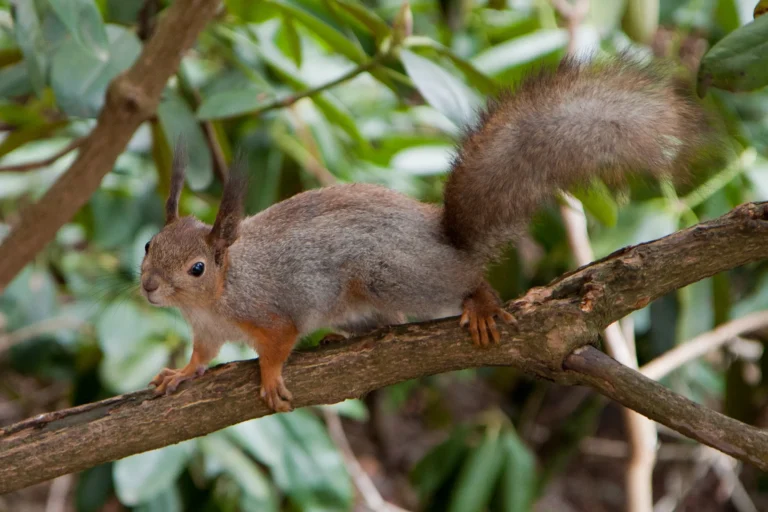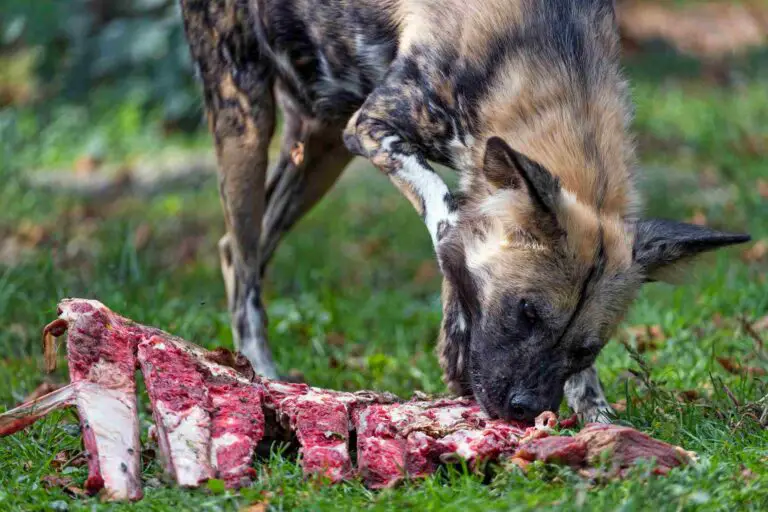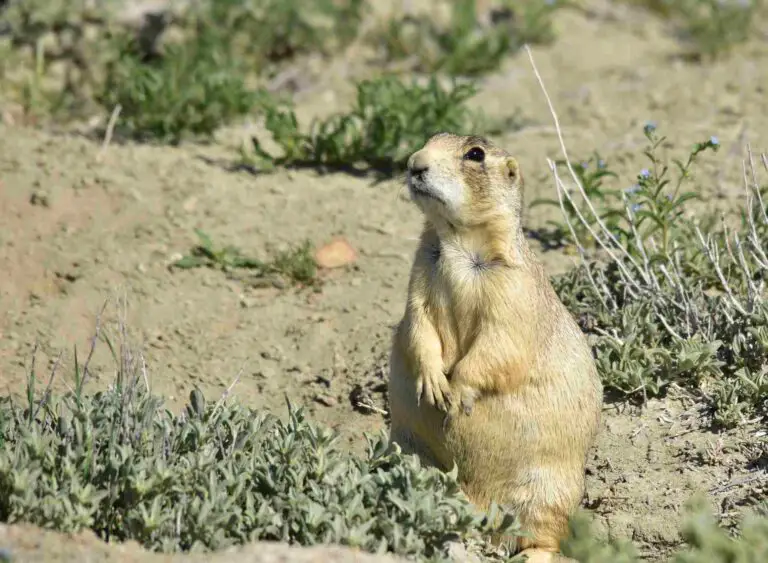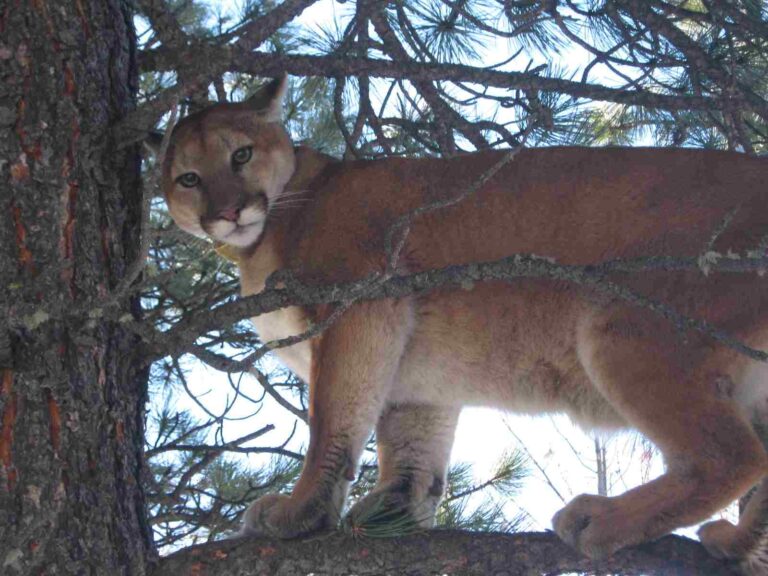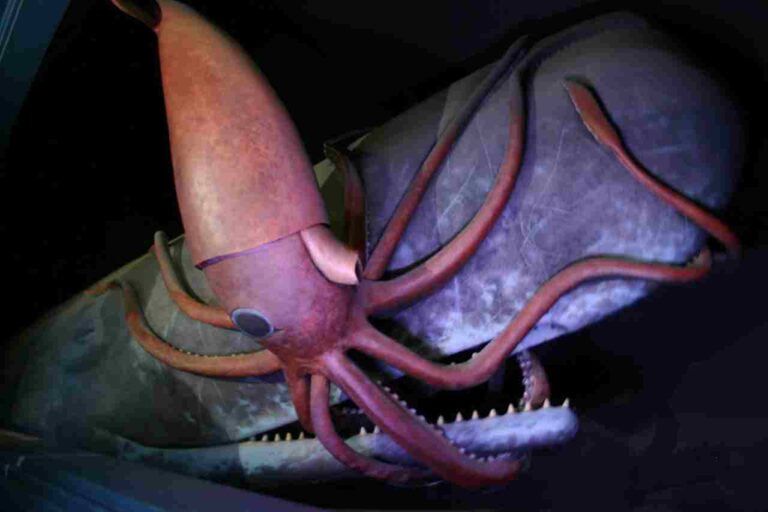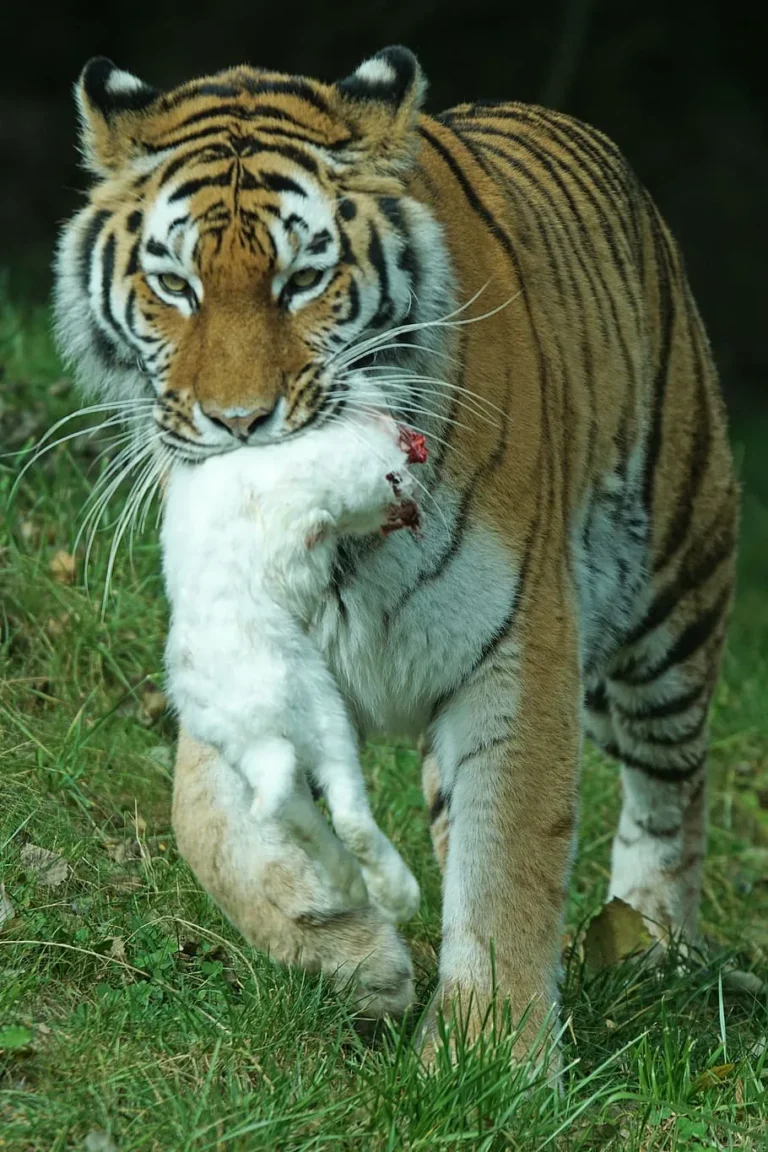What is the Role of A Consumer In An Ecosystem? Overview of Consumer Ecologic Functions
The role of a consumer in an ecosystem is multifaceted and includes; regulation of plant growth, prevention of prey overpopulation, prevention of algal overgrowth, facilitation of energy transfer, provision of food to higher consumers and decomposers, contribution to carbon sequestration and release, contribution to nutrient cycling, enhancement of biodiversity, facilitation of adaptation, and provision of carbon dioxide for photosynthesis.
These and more are discussed in this article;
1. Regulation of Plant Growth
Consumers play a crucial role in the regulation of plant growth within an ecosystem. Through their grazing activities, they help to control the population of plants and maintain a balanced ecosystem. This section will explore the importance of consumer regulation in plant growth and its impact on the overall health of the ecosystem.
*One of the key functions of consumers in regulating plant growth is their ability to control the population of herbivorous animals. By consuming plants, herbivores prevent overpopulation of certain plant species, which can lead to the depletion of resources and the dominance of a few plant species. This helps to maintain biodiversity and ensures the survival of a variety of plant species within the ecosystem.
*Consumers also play a role in shaping the structure of plant communities. Through selective grazing, they can influence the composition and distribution of plant species. For example, certain herbivores may preferentially feed on certain plant species, leading to a decrease in their abundance and allowing other plant species to thrive. This creates a more diverse and resilient plant community.
*Furthermore, consumers can indirectly regulate plant growth through their interactions with other organisms. For instance, predators that feed on herbivores can indirectly benefit plants by reducing herbivore populations. This reduces the pressure on plants and allows them to grow and reproduce more effectively.
*Consumer regulation of plant growth is particularly important in ecosystems where plants are the primary producers of energy. By controlling the population of herbivores, consumers ensure that plants have the opportunity to grow and photosynthesize, thus providing energy for the entire ecosystem. This energy transfer is essential for the survival of higher consumers and decomposers.
2. Prevention of Prey Overpopulation
Prevention of prey overpopulation is another important role that consumers play in an ecosystem. By engaging in predatory activities, consumers help to maintain a balance in the population of prey species, which is crucial for the overall health and stability of the ecosystem.
*Consumers, such as carnivores and omnivores, feed on other organisms, including herbivores and smaller predators. This predation helps to control the population of prey species, preventing them from overpopulating and causing detrimental effects on the ecosystem. Without the presence of consumers, prey populations can grow unchecked, leading to resource depletion, habitat degradation, and even the extinction of certain species.
*By regulating prey populations, consumers ensure that resources are not overexploited. Prey species, such as herbivores, rely on plants for food. If their population becomes too large, they can consume all available plant resources, leading to a decline in vegetation and disrupting the balance of the ecosystem. Consumers help to prevent this by keeping prey populations in check, allowing plants to regenerate and maintain a healthy growth rate.
*Prevention of prey overpopulation also has cascading effects on other trophic levels within the ecosystem. When prey populations are kept at a sustainable level, it allows for a more balanced energy flow across trophic levels. This means that there is enough food available for consumers, ensuring their survival and promoting the transfer of energy to higher trophic levels.
*Furthermore, by preventing prey overpopulation, consumers contribute to the maintenance of biodiversity within the ecosystem. When prey populations are controlled, it allows for the coexistence of multiple species, each occupying their specific niche. This diversity is essential for the stability and resilience of the ecosystem, as different species play unique roles in nutrient cycling, pollination, and other ecological processes.

3. Prevention of Algal Overgrowth
Algal overgrowth is a common issue in both marine and freshwater ecosystems, and consumers play a crucial role in preventing its occurrence. Through grazing on algae, marine and freshwater consumers help to maintain a balance in algal populations, ensuring the health and stability of the ecosystem.
*Algae are primary producers that play a vital role in the ecosystem by converting sunlight into energy through photosynthesis. However, under certain conditions, such as excessive nutrient availability, algal populations can grow rapidly, leading to algal blooms. These blooms can have detrimental effects on the ecosystem, including oxygen depletion, habitat degradation, and the production of harmful toxins.
*Consumers, such as herbivorous fish, crustaceans, and mollusks, feed on algae as a source of food. By grazing on algae, they control its population and prevent overgrowth. This grazing activity helps to maintain a healthy balance between algae and other organisms in the ecosystem.
*By preventing algal overgrowth, consumers contribute to the overall water quality of marine and freshwater ecosystems. Algal blooms can lead to a decrease in water clarity and the formation of harmful algal toxins. Consumers help to mitigate these effects by consuming excess algae, reducing the likelihood of algal blooms and improving water clarity.
*Furthermore, the prevention of algal overgrowth by consumers has cascading effects on other organisms within the ecosystem. Algae provide food and habitat for a variety of organisms, including small invertebrates and fish. When algal populations become too dense, it can negatively impact the availability of resources for these organisms. By controlling algal growth, consumers ensure that resources are distributed more evenly, supporting the overall biodiversity and functioning of the ecosystem.
*In addition to their role in preventing algal overgrowth, consumers also contribute to nutrient cycling. When consumers graze on algae, they release nutrients back into the ecosystem through their waste. These nutrients can then be utilized by other organisms, including algae, in a continuous cycle of nutrient exchange.
4. Facilitation of Energy Transfer Across Trophic Levels
Consumers are useful in facilitating the transfer of energy across trophic levels in an ecosystem. Trophic levels represent the different levels of the food chain, with producers at the bottom and top predators at the top. Energy flows through these levels as organisms consume and are consumed by others.
*At the base of the food chain, primary producers, such as plants and algae, convert sunlight into chemical energy through photosynthesis. This energy is then passed on to consumers when they consume these producers. Consumers, including herbivores and omnivores, obtain energy by feeding on plants or other animals.
*By consuming lower trophic level organisms, consumers acquire the energy stored in their tissues. This energy is then transferred to higher trophic levels when those consumers are consumed by predators. This transfer of energy allows for the sustenance and growth of higher-level consumers.
*For example, consider a simple food chain consisting of grass (a primary producer), a rabbit (a herbivore), and a fox (a predator). The grass converts sunlight into energy, which is consumed by the rabbit. The rabbit, in turn, becomes a source of energy for the fox.
Without the presence of consumers, the energy flow between trophic levels would be disrupted, leading to imbalances within the ecosystem.
*Consumers also play a role in regulating the population sizes of different species within an ecosystem. By consuming certain species, consumers can prevent the overpopulation of prey species, which can have negative consequences for the ecosystem.
This regulation helps to maintain a balance between predator and prey populations, ensuring the stability and functioning of the ecosystem.
5. Provision of Food to Higher Consumers and Decomposers
Consumers play a role in providing food to higher consumers and decomposers within an ecosystem. They serve as prey, forming the foundation of the food web and ensuring the flow of energy and nutrients throughout the ecosystem.
*Consumers, such as herbivores and omnivores, serve as a source of food for higher-level consumers. These higher consumers, known as secondary and tertiary consumers, rely on the energy and nutrients obtained from consuming other organisms. For example, a lion, as a tertiary consumer, relies on the energy obtained from consuming herbivores like zebras or wildebeests.
*The provision of food from consumers to higher consumers is essential for maintaining the balance and stability of the ecosystem. Without a sufficient supply of food, higher consumers would struggle to survive and reproduce, leading to population declines and potential disruptions in the food web.
*In addition to providing food for higher consumers, consumers also contribute to the nourishment of decomposers. Decomposers, such as bacteria and fungi, play a vital role in breaking down organic matter and recycling nutrients back into the ecosystem. Consumers contribute to this process by providing a constant supply of organic material through their waste products and when they die.
*When consumers consume food, they metabolize it and excrete waste products. These waste products, such as feces and urine, contain nutrients that decomposers can break down and utilize. Decomposers then release these nutrients back into the soil or water, making them available for uptake by plants and other primary producers.
*The provision of food to decomposers by consumers is crucial for nutrient cycling within the ecosystem. Nutrient cycling ensures that essential elements, such as carbon, nitrogen, and phosphorus, are continuously recycled and available for use by living organisms. This process is essential for the growth and development of all organisms within the ecosystem.
6. Contribution to Carbon Sequestration and Release
Consumers play a significant role in the process of carbon sequestration and release within an ecosystem.
Through their feeding and growth, consumers sequester carbon, helping to mitigate the impacts of climate change. However, they also release carbon when they excrete waste products and eventually die.
*When consumers feed on plants or other organisms, they take in carbon-containing compounds. This carbon becomes incorporated into their bodies as they grow and develop. By consuming organic matter, consumers effectively remove carbon from the atmosphere and store it within their tissues.
*As consumers continue to feed and grow, they accumulate more carbon, contributing to the overall carbon sequestration within the ecosystem. This process helps to reduce the concentration of carbon dioxide in the atmosphere, which is a major greenhouse gas responsible for global warming.
*However, consumers also release carbon back into the environment through their waste products. When consumers excrete waste, such as feces and urine, they release carbon-containing compounds that can be broken down by decomposers. These decomposers metabolize the waste and release carbon dioxide back into the atmosphere.
*Additionally, when consumers die, their bodies undergo decomposition, releasing carbon back into the environment. Decomposers break down the organic matter, releasing carbon dioxide as a byproduct of their metabolic processes. This carbon dioxide is then released into the atmosphere, contributing to the carbon cycle.
*The contribution of consumers to carbon sequestration and release is essential for maintaining the balance of carbon within the ecosystem. By sequestering carbon through their growth and feeding, consumers help to mitigate climate change by reducing the amount of carbon dioxide in the atmosphere. However, the release of carbon through waste products and decomposition ensures that carbon is continuously cycled within the ecosystem, making it available for use by other organisms.
7. Contribution to Nutrient Cycling
Consumers play a crucial role in the cycling of nutrients within an ecosystem. Through their feeding habits and interactions with other organisms, they contribute to the movement and redistribution of essential elements such as carbon, nitrogen, and phosphorus.
This process is known as nutrient cycling, and it is important for the overall health and continuity of the ecosystem.
*Consumers obtain nutrients from the food they consume. When they feed on plants or other organisms, they extract essential elements from their prey or food source. These nutrients are then assimilated into the consumer’s body and used for various physiological processes, such as growth, reproduction, and energy production.
*As consumers move through the trophic levels, they transfer these nutrients to higher levels. For example, when a herbivore consumes plants, it takes in the nutrients present in the plant tissues. When a carnivore preys on the herbivore, it obtains the nutrients stored in the herbivore’s body. This transfer of nutrients from one organism to another is essential for maintaining the balance of nutrients within the ecosystem.
*Consumers also contribute to nutrient cycling through their waste products. When they excrete waste, such as feces and urine, they release nutrients back into the environment. These waste products contain valuable nutrients that can be broken down and recycled by decomposers. Decomposers break down the organic matter, releasing the nutrients back into the soil or water, where they can be taken up by plants or other organisms.
*Furthermore, consumers indirectly influence nutrient cycling through their interactions with other organisms. For example, predators regulate the population sizes of their prey, preventing overconsumption and ensuring a balanced nutrient flow. By controlling the population sizes of certain species, consumers help to maintain the availability of nutrients for other organisms in the ecosystem.
*The contribution of consumers to nutrient cycling is essential for the overall functioning and productivity of the ecosystem. By extracting and redistributing nutrients, consumers ensure that essential elements are available to support the growth and survival of other organisms. This process helps to maintain the balance and sustainability of the ecosystem.
8. Enhancement of Biodiversity Through Grazing and Predation
Consumers help in enhancing biodiversity within an ecosystem through their grazing and predation activities. By feeding on different species, consumers help to regulate population sizes and maintain a diverse community of organisms.
*Grazing by herbivorous consumers, such as deer or rabbits, can have a significant impact on plant communities. These consumers selectively feed on certain plant species, which can prevent any one species from dominating the ecosystem. This promotes the growth and survival of a variety of plant species, leading to a more diverse and resilient ecosystem.
*Predators, on the other hand, play a crucial role in controlling the population sizes of their prey. By preying on certain species, predators prevent overpopulation and maintain a balance within the ecosystem. This balance is essential for the survival of both predator and prey species, as well as for the overall health of the ecosystem.
*Through their feeding habits, consumers also influence the behavior and adaptations of their prey. Prey species develop various strategies to avoid being consumed, such as camouflage, defensive structures, or behavioral adaptations. This constant interaction between consumers and prey drives the evolution of both groups, leading to a more diverse range of adaptations within the ecosystem.
*Furthermore, the presence of consumers can create a cascade effect on other organisms within the ecosystem. For example, the presence of predators can indirectly benefit certain plant species by reducing the population sizes of herbivores that feed on those plants. This allows the plants to thrive and contribute to the overall biodiversity of the ecosystem.
*Overall, the grazing and predation activities of consumers contribute to the enhancement of biodiversity within an ecosystem. By regulating population sizes, influencing adaptations, and creating indirect effects on other organisms, consumers play a crucial role in maintaining a diverse and balanced ecosystem.
*The presence of a diverse range of species within an ecosystem is important for its resilience and ability to withstand environmental changes. A diverse ecosystem is better equipped to recover from disturbances and maintain its overall functioning. Therefore, the role of consumers in enhancing biodiversity is essential for the long-term sustainability of ecosystems.
9. Facilitation of Adaptation
Consumers are involved in facilitating adaptation within an ecosystem. Through various interactions such as grazing, predation, competition, parasitism, and mutualism, consumers cause producers and other consumers to evolve and adapt to their changing environment.
*Grazing by herbivorous consumers, for example, exerts selective pressure on plant species. As consumers feed on certain plants, they may preferentially target individuals with certain traits, such as higher nutrient content or better defenses.
Over time, this selective pressure leads to the evolution of plants with adaptations that make them less palatable or more resistant to grazing. These adaptations can include thorns, spines, or chemical defenses that deter herbivores. In turn, herbivores may also adapt to overcome these defenses, leading to a continuous cycle of adaptation and counter-adaptation.
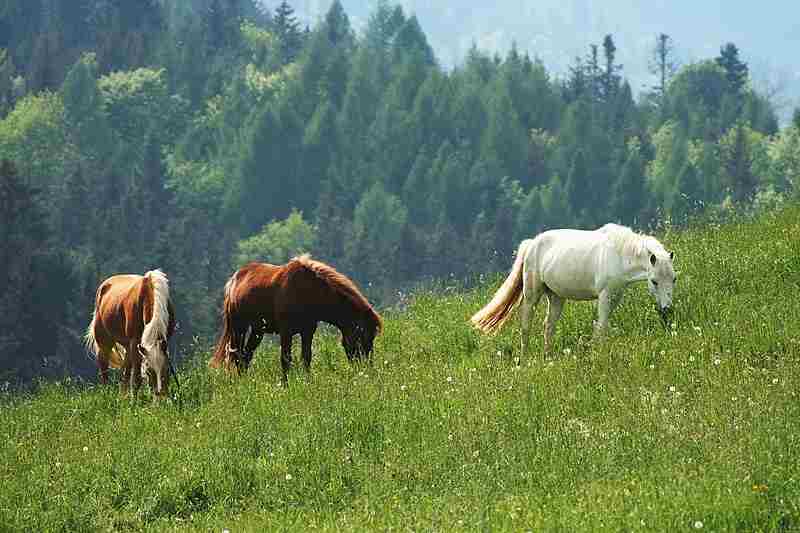
*Predation is another important driver of adaptation. Predators exert selective pressure on their prey, favoring individuals with traits that make them more difficult to catch or consume.
Prey species may develop various adaptations such as camouflage, warning coloration, or defensive structures to avoid predation. This constant interaction between predators and prey leads to the evolution of traits that enhance survival and increase the chances of successful reproduction.
*Competition among consumers for limited resources also drives adaptation. When different species compete for the same resources, such as food or habitat, natural selection favors individuals with traits that give them a competitive advantage.
This can lead to the evolution of specialized feeding strategies, niche partitioning, or changes in behavior to reduce competition and increase resource acquisition.
*Parasitism and mutualism also contribute to adaptation within ecosystems. Parasites exert selective pressure on their hosts, favoring individuals with traits that make them less susceptible to infection or better able to tolerate the parasite’s presence. Hosts, in turn, may evolve defenses or immune responses to counteract the effects of parasites.
Mutualistic interactions, where both species benefit, can also drive adaptation. For example, pollinators and flowering plants have co-evolved to optimize their mutualistic relationship, with plants developing attractive flowers and pollinators evolving specialized structures to access nectar and pollen.
*Overall, the interactions between consumers and their environment drive adaptation within ecosystems. Through grazing, predation, competition, parasitism, and mutualism, consumers exert selective pressure on other organisms, leading to the evolution of traits that enhance survival and reproductive success. This continuous process of adaptation ensures that species are better suited to their environment and increases the overall resilience and stability of ecosystems.
*Understanding the role of consumers in facilitating adaptation is crucial for conservation efforts and managing ecosystems. By recognizing the importance of these interactions, we can better protect and preserve the biodiversity and functioning of natural ecosystems for future generations.
10. Provision of Carbon Dioxide for Photosynthesis
Consumers play a crucial role in the provision of carbon dioxide for photosynthesis within an ecosystem. Carbon dioxide is an essential component for the process of photosynthesis, which is the primary means by which plants and other autotrophs convert sunlight into energy.
Consumers contribute to the availability of carbon dioxide through various mechanisms, including respiration and the biodegradation of organic wastes and remains.
*Respiration is a fundamental process for consumers, as it allows them to obtain energy from the food they consume. During respiration, consumers take in oxygen and release carbon dioxide as a byproduct. This carbon dioxide is then released into the surrounding environment, where it becomes available for plants to utilize in photosynthesis. In this way, consumers indirectly provide the carbon dioxide necessary for plants to carry out their energy-producing process.
*Additionally, consumers contribute to the availability of carbon dioxide through the biodegradation of organic wastes and remains. When consumers consume food, they break down organic matter and release carbon dioxide as a result of the decomposition process. This carbon dioxide is then released into the environment, where it can be absorbed by plants and used in photosynthesis. The decomposition of organic matter by consumers is a vital part of nutrient cycling within ecosystems, as it releases essential elements, including carbon, back into the environment for reuse by other organisms.
By providing carbon dioxide for photosynthesis, consumers contribute to the overall productivity and functioning of ecosystems. Photosynthesis is the foundation of the food chain, as it produces organic compounds that serve as a source of energy for consumers. Without an adequate supply of carbon dioxide, plants would not be able to carry out photosynthesis, leading to a decline in primary productivity and a subsequent decrease in the availability of food for consumers.
What do Consumers Need to Survive?
What consumers need to survive are; food, water, oxygen, and stable habitat.
1. Food
Consumers play a crucial role in an ecosystem by serving as a link between different trophic levels and facilitating energy transfer. One of the primary needs for consumers to survive is food. Food sources vary depending on the type of consumer, with plants being the main source for herbivores, animal biomass for carnivores, and both for omnivores.
* Herbivores rely on plants as their primary source of food. They consume various parts of plants such as leaves, stems, and fruits. This consumption of plant material provides herbivores with the necessary nutrients and energy to survive and reproduce.
* Carnivores, on the other hand, feed on other animals. They prey on herbivores or other carnivores, obtaining their energy and nutrients from the animal biomass. Carnivores are often at the top of the food chain and play a crucial role in regulating prey populations.
* Omnivores have a more diverse diet, consuming both plant material and animal biomass. This flexibility allows them to adapt to different food availability and ecological conditions. By consuming both plants and animals, omnivores contribute to the energy flow and nutrient cycling within the ecosystem.
The availability of food resources directly impacts the survival and population dynamics of consumers. Changes in the abundance or distribution of food sources can have cascading effects throughout the ecosystem. For example, a decline in plant productivity due to environmental factors can lead to a decrease in herbivore populations, which in turn affects the abundance of carnivores that rely on herbivores as their food source.
2. Water
Consumers, like all living organisms, require water to survive. Water is essential for various physiological processes and is needed to maintain proper hydration and bodily functions. While some consumers, like desert animals including the kit fox, have adapted to extract water from their food, the majority of consumers rely on external sources of water.
* Water is crucial for the digestion and absorption of nutrients in consumers. It helps break down food particles and facilitates the transport of nutrients across cell membranes. Without an adequate water supply, consumers would struggle to extract the necessary nutrients from their food.
* Additionally, water plays a vital role in regulating body temperature. Many consumers rely on evaporative cooling through sweating or panting to prevent overheating. Water acts as a coolant, allowing consumers to maintain a stable internal temperature in various environmental conditions.
* Water is also essential for waste removal and detoxification. It helps flush out metabolic waste products through urine and supports the proper functioning of the kidneys and other excretory organs.
* In aquatic ecosystems, water serves as the habitat for many consumers. It provides a medium for movement, reproduction, and the availability of food resources.
The availability of water resources directly affects the survival and distribution of consumers. Changes in water availability, such as droughts or pollution, can have significant impacts on consumer populations and the overall functioning of ecosystems. Therefore, ensuring access to clean and sufficient water sources is crucial for the well-being and persistence of consumer species.
3. Oxygen
Oxygen is a vital element needed by consumers to survive. It plays a crucial role in various physiological processes and is essential for the proper functioning of their bodies.
* Oxygen is necessary for cellular respiration, the process by which consumers convert food into energy. Through respiration, oxygen is used to break down glucose molecules and produce ATP, the energy currency of cells. Without an adequate supply of oxygen, consumers would not be able to generate the energy needed for growth, reproduction, and other essential activities.
* Oxygen is also involved in the metabolism of waste products. It helps in the breakdown of harmful substances, such as toxins and metabolic byproducts, allowing consumers to eliminate them from their bodies. This detoxification process is vital for maintaining the overall health and well-being of consumers.
* In aquatic ecosystems, oxygen is particularly important for consumers. Many aquatic organisms, such as fish and invertebrates, rely on dissolved oxygen in the water for respiration. Adequate oxygen levels are necessary to support their survival and prevent oxygen-deprived conditions, such as hypoxia, which can be detrimental to consumer populations.
* Additionally, oxygen is essential for the proper functioning of the immune system in consumers. It helps in the production of reactive oxygen species (ROS), which play a role in defending against pathogens and maintaining overall immune health.
Ensuring a sufficient supply of oxygen is crucial for the survival and well-being of consumers. Changes in oxygen availability, such as oxygen depletion in water bodies or air pollution, can have significant impacts on consumer populations and ecosystem dynamics. Therefore, maintaining oxygen-rich environments is essential for supporting consumer species and the overall functioning of ecosystems.
4. Stable Habitat
A stable habitat is crucial for the survival of consumers in an ecosystem. It refers to an environment that is not fragmented, polluted, or facing other threats like poaching. A stable habitat provides consumers with the necessary resources and conditions to thrive and fulfill their ecological roles.
* A stable habitat ensures the availability of food sources for consumers. It provides a diverse range of plant and animal species that consumers can feed on. This diversity is essential for maintaining a balanced ecosystem and preventing the overconsumption of any particular species.
* In addition to food, a stable habitat also provides consumers with shelter and protection. It offers suitable nesting sites, hiding places, and refuge from predators. These features allow consumers to rest, reproduce, and raise their young in a safe and secure environment.
* A stable habitat also plays a crucial role in maintaining the overall health and well-being of consumers. It provides clean air and water, free from pollutants and contaminants. This ensures that consumers can breathe and drink without being exposed to harmful substances that could negatively impact their health.
* Furthermore, a stable habitat promotes the natural behavior and movement of consumers. It allows them to migrate, forage, and establish territories, which are essential for their survival and reproductive success.
Ensuring the preservation and conservation of stable habitats is vital for the long-term survival of consumers and the overall functioning of ecosystems. It requires efforts to protect and restore natural habitats, reduce pollution, and mitigate the impacts of human activities on the environment. By safeguarding stable habitats, we can support the resilience and biodiversity of consumer populations, contributing to the health and sustainability of our ecosystems.
FAQs
1. What is a Primary Consumer’s Role in an Ecosystem?
A primary consumer’s role in an ecosystem is to regulate plant and algae populations. They do this by feeding on plants and algae, controlling their growth and preventing overpopulation. By consuming these primary producers, primary consumers help maintain a balance in the ecosystem and ensure the availability of resources for other organisms. This trophic regulation is essential for the overall health and stability of the ecosystem.
2. What Roles are Played in an Ecosystem by Producers and Consumers?
Producers, such as plants and algae, play a crucial role in an ecosystem by engaging in photosynthetic food production. They convert sunlight, water, and carbon dioxide into organic compounds, providing energy and nutrients for themselves and other organisms.
Consumers, on the other hand, play a role in trophic regulation. They obtain energy by consuming other organisms, including producers and other consumers. Through their feeding activities, consumers help control population sizes, maintain energy flow, and shape the structure of the ecosystem.
3. What is the Role of a Consumer in the Flow of Energy in an Ecosystem?
Consumers play a vital role in the flow of energy in an ecosystem. They facilitate energy flow through feeding, excretion, and decomposition. When consumers consume other organisms, they obtain energy stored in the organic matter of their prey. This energy is then utilized for their own growth, reproduction, and metabolic processes.
Through excretion, consumers release waste products, including energy-rich compounds, back into the environment. These waste products can be further decomposed by decomposers, releasing energy that can be utilized by other organisms. In this way, consumers contribute to the continuous flow of energy through the ecosystem.
4. What is the Role of a Consumer in a Food Chain?
The role of a consumer in a food chain is to facilitate the continuous flow of food resources. Consumers obtain energy by consuming other organisms, including producers and other consumers.
They are positioned at different trophic levels in the food chain, with each level representing a different feeding relationship. As consumers feed on lower trophic levels, they transfer energy and nutrients from one organism to another. This transfer of energy allows for the sustenance and growth of consumer populations and ensures the availability of resources for higher trophic levels.
5. What is an Example of a Consumer in Science?
An example of a consumer in science is a herbivorous mammal. Mammals, reptiles, amphibians, birds, microbes, carnivores, omnivores, and herbivores are all examples of consumers.
These organisms rely on consuming other organisms for their energy and nutrient requirements. Herbivorous mammals, for instance, feed on plants as their primary food source. They play a crucial role in regulating plant populations and maintaining the balance of the ecosystem.
6. What is the Role of a Secondary Consumer in an Ecosystem?
The role of a secondary consumer in an ecosystem is to regulate primary consumer populations. Secondary consumers are organisms that feed on primary consumers.
By consuming primary consumers, they help control their population sizes, preventing overconsumption of primary producers. This trophic regulation ensures the stability and balance of the ecosystem. Secondary consumers also play a role in energy transfer, as they obtain energy from primary consumers and transfer it to higher trophic levels.
7. What are Consumers?
Consumers are organisms that cannot produce their own food and rely on consuming other organisms for their energy and nutrient requirements. They are an essential part of the food chain and play a crucial role in the functioning of ecosystems.
Consumers can be classified into different trophic levels based on their feeding habits and position in the food chain. They contribute to the regulation of population sizes, energy flow, and nutrient cycling within the ecosystem.
8. What is the Role of Tertiary Consumers?
The role of tertiary consumers is to provide top-down control and trophic regulation through cascading effects. Tertiary consumers are organisms that occupy the highest trophic level in the food chain. They feed on secondary consumers, controlling their population sizes and indirectly influencing lower trophic levels.
By regulating the abundance of lower trophic levels, tertiary consumers help maintain the balance and stability of the ecosystem. Their presence and feeding activities can have cascading effects throughout the food web, impacting multiple trophic levels and shaping the structure of the ecosystem.
